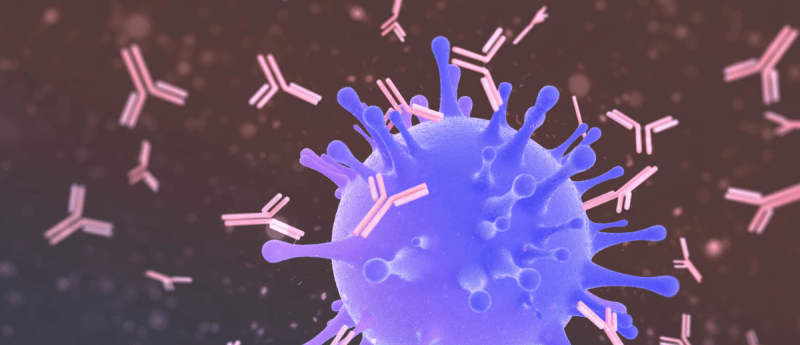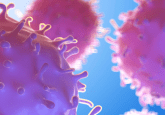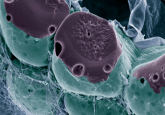Using vectorized antibodies to treat CNS diseases: an interview with Alexander Vos, VectorY

During this interview at Meeting on the Med 2022, Alexander Vos (VectorY; Amsterdam, The Netherlands) discusses the use of vectorized antibodies in treating CNS diseases. In addition, he talks about the challenges of manufacturability and scale-up in cell and gene therapy, as well as the importance of international collaboration in forwarding the industry and overcoming such hurdles.
Could you please introduce yourself and your company?
My name is Alexander Vos and I am the CEO of VectorY (Amsterdam, The Netherlands). We are a gene therapy company using vectorized antibodies to enable targeted protein degradation. We apply adeno-associated viruses (AAVs) to enter the cells and express vectorized antibodies as single chain variable fragments, which then address aggregated proteins that play a role in many diseases. We focus on central nervous system (CNS) diseases such as Amyotrophic Lateral Sclerosis (ALS), Parkinson’s and Alzheimer’s – these aggregate proteins are the main cause of brain dysfunction. A key example is ALS; the antibody focuses on the aggregates instead of the wild type, so cellular function can continue. We then hope to reduce aggregates within the cell, essentially cleaning up the cell to improve disease outcome.
To enable this, we have created vectorized antibodies that we call VecTabs. We also have an additional tool called VecTrons, where we fuse specific protein fragments to the single chain fragments and direct them to specific degradation pathways, such as the ubiquitin proteasome system. By doing so, we can select the pathway which is most appropriate to clear the aggregates. Further, in ALS we have a proprietary AAV5 vector that is very effective in reaching target cells. We are also working on improved capsids that target more specific tissues in the brain and can cross the blood−brain barrier, so we are able to address specific types of cells in degenerative disorders inside the brain. We have found that in order to address a disease like Huntington’s or Parkinson’s, we need specific transduction inside the deep brain rather than the cortex. This need has led us to develop deep brain capsids that target these specific areas of the brain.
Finally, we address the core theme of manufacturability in gene therapy. We design our elements ensuring that they can be manufactured. Through that, we have found that our baculovirus insect cell-based platform is very amenable to integrating new capsids, meaning they seem more manufacturable, scalable and stable than the traditional HEK programs that are used in the industry. We believe that these three elements; the VecTabs and the VecTrons, as well as the capsid and manufacturing together, will yield a new class of therapeutics that can address specific cells that otherwise cannot be reached through intravenous administration.
Scalability is one of the greatest problems in cell and gene therapeutics, it seems like VectorY are tackling this problem?
Definitely! People have made amazing progress in gene therapy, but so far we are only replacing or repairing single genes. With our approach, we are not specifically repairing genes but are dealing with the cellular machinery, i.e. the proteins inside the cell.
Antibody technology is a very important and successful tool, but it does not target specific tissues like gene therapy does. By merging these two, you open a whole new set of opportunities. This is what VectorY is all about.
How do you weigh up clinical verses economic value and how does VectorY choose where to focus its therapeutic effort?
My personal view is that it all starts with the patient and the impact that you can have for them. To have an impact on the disease outcome should be the ultimate goal of any therapy, especially in gene therapy. Some modalities can be better addressed with antibiotics rather than gene therapy, which is not always an appropriate tool for all kinds of diseases. It’s still very complex to administer, with many questions around the cost of manufacturing. Therefore, expensive gene therapies with limited clinical impacts for certain diseases are not always an appropriate approach.
I think it is important to begin with the patient and clinical impact, then later derive economic impact. For example, what costs of healthcare can you prevent by administering a one-time gene therapy treatment? Continuous expression of a gene or antibodies can thus yield economic value, though my focus is on the clinical benefits. Economics are then tasked to make it work from an economic perspective, to incentivize the industry to continue to develop innovative therapies and compensate them for the cost of development. On the other hand, the whole cost for society must remain bearable and appropriate in the context of the disease that you are trying to treat.
How does VectorY collaborate internationally and develop strategic partnerships to strengthen not only your own company, but the field as a whole?
After yielding the first results from VecTron and the capsids, we found that there is application potential not only in the CNS, but also in areas such as immunology and oncology. The capsids can also be applied in muscle, heart and other areas – the manufacturing platform can be used across many types of AAV therapies. Each of these capabilities may yield significant partnering activity in the coming years; in this case VectorY could support the co-development of a novel antibody with our technology in a capsid form, or with our VecTabs and VecTrons. We have already set up a number of collaborations, both with companies as well as with academia to collaborate on specific targets on the development of the manufacturing technology. We have other opportunities in the making, where we are keen to bring the right parties together to develop our technology, as well as out-license and partner certain approaches. I believe it’s a continuous trade off between our vision for VectorY’s impact in CNS and our divergence from this specific indication, for which we may collaborate with another party to take on.
Do you have any markets that you are interested in developing the most? For example, US or global?
We strictly look at our business as a global effort. Interesting areas such as immunology and ophthalmology present a huge potential for partnering, which is not geography dependent.
What do you think is the greatest challenge to overcome in the cell and gene therapy sphere?
I think manufacturability and accessibility is one of the greatest challenges. There are only so many diseases that you can treat at a cost of €400,000 for a single treatment – accessibility for broader groups of patients is a real challenge. Therefore, it is our job to reduce the cost of manufacturing and to make the reliability and quality of the products better. Under the surface there are still a number of questions regarding the risks and quality issues in gene therapy products.
We hope our baculovirus insect cell-based program contributes to a solution by developing scalable and lower cost therapies. Some of this is done in-house because we believe we have a unique understanding of these challenges – members of our team have been working on this platform for many years. I have worked not only for this company, but also in a CDMO, so I believe we have a lot of collective knowledge to understand and tackle this challenge.
Any other comments?
VectorY is a new company with an exciting future. We have built an incredible, motivated team based in Amsterdam. We hope that in difficult diseases such as ALS, we can prove that treatment can be rolled out very quickly, having a positive impact on these patients’ lives.
The opinions expressed in this feature are those of the interviewee/author and do not necessarily reflect the views of RegMedNet or Future Science Group.





